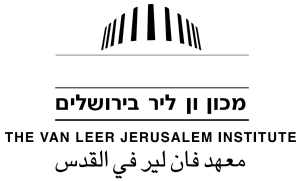[button style=’blue’ url=’tlv1.fm/telavivreview’ target=’_blank’]Subscribe To The Podcast[/button] [button style=’blue’ url=’tlv1.fm/content/the-tel-aviv-review/’ target=’_blank’]Previous Episodes[/button]
No one can forget the horrifying terror attack of 2001 when a suicide bomber killed 21 people, mostly teenage girls, at a Tel Aviv nightclub. But few remember the Palestinian pharmacist murdered in East Jerusalem shortly afterward in a possible revenge attack – whose family donated his heart to save a Jewish Israeli man’s life. Rowan Somerville explores the parallel stories in Beat: The True Story of a Bomb and a Heart Transplant.
Support the show on Patreon
Receive extra segments, book discounts, and other patron-only perks by supporting the show on Patreon. Click to find out how a handful of dollars a month can help.
This season of the Tel Aviv Review is made possible by The Van Leer Jerusalem Institute, which promotes humanistic, democratic, and liberal values in the social discourse in Israel.
[/infobox]







“without the media terrorism is just a psychotic crime.”
—Rowan Somerville, as interviewed in this podcast.
—
Symbols are our tools and we theirs. One of the focal events of Somerville’s book is the suicide bombing of a Tel-Aviv dance club, teen women, mostly post-Soviet, killed while waiting to enter, women allowed to enter free that night. These young women were not even self declared Israeli; many were visiting with their parents, families deciding if they would make Aliyah at all. What the bombing attacked was a concept instanced potentially in bodies, as in some form all concepts are instanced, here that of immigration and refuge. Refuge, the core of Zionism, was assaulted; but the bomber saw continued invasion of land usurped. That coin is the core dynamic of the Conflict.
These women were colored by concepts perhaps unwanted if thought at all. Homo sapiens lives, progresses, destroys through the superimposition of concepts beyond an individual’s scope. In our discourse we manipulate one another unendingly, involuntary servitude ever in the wings, hopefully to alight upon others in our dark, save for those quite often times when we delight to see it land in full view. We cheer slavery gone, but it seems to me we are unable to do without it. We can, however, reduce the personal costs of rule by symbol, this I think what the rule of law is at its best. The particularization of crime to material cause and consequence to some, only some, degree unshackles us from control by symbol; this I suggest the core rationale for free speech, disallowing words in their generality as material cause, so limiting the control of others by the control of their speech. To reduce a symbol’s power, let it babble in words. When I control words I want to control whence they come as well–the body of the speaker.
Yet science too is the manipulation, contention, and implementation of symbol. The heart transplant detailed in the interviewed book is a product of symbols applied after much contention and personal effort. We live in a world where of necessity our heavens can make hell, and that is why the Israeli-Palestinian Conflict is important to me–it captures in an unending arena what humanity used to evolve, no God to come an save us from what created us, our only salvation linked to that very creation if possible at all.
There was, of all places, an example of this referenced in the 2017 Dr Who Christmas special, that secular version of hope that cannot quite jettison divinity. On Dec 25th 1914 at some places on the war front Christmas briefly supplanted nationalism, men emerging from the trenches to partake of what food there was, playing games and trying to communicate. Not men of no symbol; men donning other symbol. No story this–it did happen. But in no other year of that war: command and the tolls of casualties erased that symbol from consequent implementation. I wonder if on the next Dec 25th any men entrenched hoped the story would come again and, when it did not, decided the story was always only a story. Command controls symbol for the ends of, well, symbols controlling command. I reference the treatment of Breaking the Silence.
strong words that only now I saw….